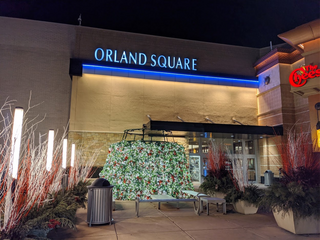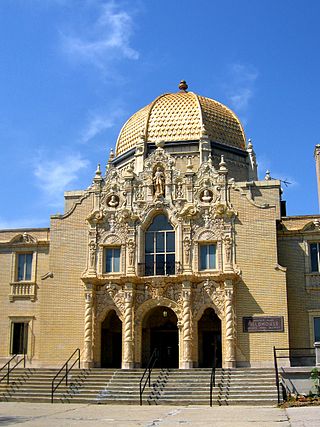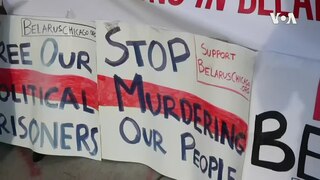Related Research Articles

Chicago is the most populous city in the U.S. state of Illinois and in the Midwestern United States. With a population of 2,746,388 in the 2020 census, it is the third-most populous city in the United States after New York City and Los Angeles. As the seat of Cook County, the second-most populous county in the U.S., Chicago is the center of the Chicago metropolitan area, often colloquially called "Chicagoland" and home to 9.6 million residents.

Bridgeview is a village in Cook County, Illinois, United States. It is located approximately 15 miles (24 km) southwest of the Chicago Loop. As of the 2020 census, the village population was 17,027.

Buffalo Grove is a village in Lake and Cook Counties in the U.S. state of Illinois. A suburb of Chicago, it lies about 30 miles (50 km) northwest of Downtown Chicago and 20 miles (32 km) north of O'Hare International Airport. As of the 2020 Census, Buffalo Grove has a population of 43,212. It totals 9.6 square miles (25 km2) of land, with the top three-quarters in Lake County and the bottom quarter in Cook County. Roads in the village such as Lake Cook Road and Illinois Route 83 converge on I-294. It is part of the Chicago Metropolitan Area.

Lakeview, also spelled Lake View, is one of the 77 community areas of Chicago, Illinois. Lakeview is located in the city's North Side. It is bordered by West Diversey Parkway on the south, West Irving Park Road on the north, North Ravenswood Avenue on the west, and the shore of Lake Michigan on the east. The Uptown community area is to Lakeview's north, Lincoln Square to its northwest, North Center to its west, and Lincoln Park to its south. The 2020 population of Lakeview was 103,050 residents, making it the second-largest Chicago community area by population.

Rogers Park is the first of Chicago's 77 community areas. Located 9 miles (14 km) from the Loop, it is on the city's far north side on the shore of Lake Michigan. The neighborhood is culturally diverse and features green spaces, early 20th century architecture, live theater, bars, restaurants, and beaches. It is bounded by the city of Evanston along Juneway Terrace and Howard Street to the north, Ridge Boulevard to the west, Devon Avenue and the Edgewater neighborhood to the south, and Lake Michigan to the east. The neighborhood just to the west, West Ridge, was part of Rogers Park until the 1890s and is still sometimes referred to as West Rogers Park. In the early 1900s, what is now Loyola University Chicago became established at the south eastern end of the community area along the lake.

Uptown is one of Chicago's 77 community areas. Uptown's boundaries are Foster Avenue to the north; Lake Michigan to the east; Montrose Avenue, and Irving Park Road to the south; Ravenswood Avenue, and Clark Street to the west. To the north is Edgewater, to the west is Lincoln Square, and to the south is Lakeview. Near the lake are some of the northern reaches of Lincoln Park, including Montrose Beach and multiple nature reserves. The area has a mix of commercial and residential development, and includes a well-established entertainment district of clubs and concert venues, and was a center for early film making. Truman College, a two-year city college, is located here, and the area's southwest corner includes the historic 19th century Graceland Cemetery.

Archer Heights is a community area in Chicago, Illinois, one of the 77 official community areas of Chicago.

Chicago Lawn is one of the 77 community areas of Chicago, Illinois. It is located on the southwest side of the city. Its community neighbors include Gage Park, West Englewood, Ashburn, and West Lawn. It is bounded by Bell Avenue on the east, Central Park Avenue on the west, 59th Street on the north, and 75th Street on the south, and is 13 km (8.1 mi) southwest of the Loop. Local citizens refer to the area as "Marquette Park," after the park in its center.

The demographics of Chicago show that it is a large, and ethnically and culturally diverse metropolis. It is the third largest city and metropolitan area in the United States by population. Chicago was home to over 2.7 million people in 2020, accounting for over 25% of the population in the Chicago metropolitan area, home to approximately 9.6 million.

The Chicago Southland is a region comprising the south and southwest suburbs of the City of Chicago in the U.S. state of Illinois. Home to roughly 2.5 million residents, this region has been known as the Southland by the local populace and regional media for over 20 years. Despite this relatively recent term, some older native Southlanders and current local advertisements colloquially refer to the Southland as the Southside, meaning on the southern side/border of Chicago as extended into the suburbs since some of them previously lived on Chicago's Southside but moved to the suburbs during post WWII white flight.
Iraqi Americans are American citizens of Iraqi descent. As of 2015, the number of Iraqi Americans is around 145,279, according to the United States Census Bureau.

The demographics of Filipino Americans describe a heterogeneous group of people in the United States who trace their ancestry to the Philippines. As of the 2020 Census, there were 4.4 million Filipino Americans, including Multiracial Americans who were part Filipino living in the US. Filipino Americans constitute the third-largest population of Asian Americans, and the largest population of Overseas Filipinos.

Palestinian Americans are Americans who are of full or partial Palestinian descent. It is unclear when the first Palestinian immigrants arrived in the United States, but it is believed that they arrived during the early 1900s.
The American Indian Center (AIC) of Chicago is the oldest urban American Indian center in the United States. It provides social services, youth and senior programs, cultural learning, and meeting opportunities for Native American peoples. For many years, it was located Uptown and is now in the Albany Park, Chicago community area.
Among the Japanese in the Chicago metropolitan area, there are Japanese-American and Japanese expatriate populations. Early Japanese began arriving around the time of the World's Columbian Exposition of 1893. During World War II, Japanese-Americans opted to live in Chicago rather than be interned, primarily in camps on the Pacific Coast. In the 20th century, Japanese and Japanese Americans formed local institutions that continue into the 21st century.
As of the 2000 U.S. Census there were 45,000 South Korean-origin people in the Chicago metropolitan area. As of 2006 the largest groups of Koreans are in Albany Park, North Park, West Ridge, and other communities near Albany Park. By that time many Koreans began moving to northern and northwestern Chicago suburbs, settling in Glenview, Morton Grove, Mount Prospect, Niles, Northbrook, Schaumburg, and Skokie. A Koreatown, labeled "Seoul Drive", exists along Lawrence Avenue between Kedzie Avenue and Pulaski Road. There were a number of Korean businesses on Clark Street in the 1970s, in Lakeview and Lincoln Park.
The 2020 estimate of the Jewish population in metropolitan Chicago is around 319,600, according to Brandeis University's Chicago Report. The population of Jewish people within the City of Chicago's limits is estimated to be around 240,000, with another 80,000 residing in the suburbs surrounding the major city. At the end of the 20th century there were a total of 270,000 Jews in the Chicago area, with 30% in the city limits. In 1995, over 80% of the suburban Jewish population lived in the northern and northwestern suburbs of Chicago. At this time, West Rogers Park was the largest Jewish community within the city of Chicago. However, the Jewish population within the city had been declining and tended to be older and more well-educated than the Chicago average. The Jewish immigrants to Chicago came from many different countries, with the most common being Eastern Europe and Germany.

The West Side is one of the three major sections of the city of Chicago, Illinois, United States. It is joined by the North and South Sides. The West Side contains communities that are of historical and cultural importance to the history and development of Chicago. On the flag of Chicago, the West Side is represented by the central white stripe.

Belarusians in Chicago are an ethnic group in the Chicagoland area.
References
- Specific
- ↑ American Community Survey: Chicago city . Retrieved March 6, 2011.
- ↑ Bureau, U. S. Census. "American FactFinder". wayback.archive-it.org. Archived from the original on 9 January 2015. Retrieved 24 September 2023.
- 1 2 "Tanzanians". www.encyclopedia.chicagohistory.org. Retrieved 24 September 2023.
- ↑ "Nigerians".
- ↑ "Ethiopians".
- ↑ "Ghanaians".
- ↑ "Kenyans".
- ↑ "South Africans".
- ↑ "Haitians".
- ↑ "Ivorians". www.encyclopedia.chicagohistory.org. Retrieved 24 September 2023.
- ↑ "Senegalese". www.encyclopedia.chicagohistory.org. Retrieved 24 September 2023.
- ↑ "Angolans". www.encyclopedia.chicagohistory.org. Retrieved 24 September 2023.
- ↑ "Somalis". www.encyclopedia.chicagohistory.org. Retrieved 24 September 2023.
- ↑ "Cameroonians". www.encyclopedia.chicagohistory.org. Retrieved 24 September 2023.
- ↑ "Togolese". www.encyclopedia.chicagohistory.org. Retrieved 24 September 2023.
- ↑ "Eritreans". www.encyclopedia.chicagohistory.org. Retrieved 24 September 2023.
- ↑ "Zimbabweans". www.encyclopedia.chicagohistory.org. Retrieved 24 September 2023.
- ↑ "Malians". www.encyclopedia.chicagohistory.org. Retrieved 24 September 2023.
- ↑ "Sierra Leoneans". www.encyclopedia.chicagohistory.org. Retrieved 24 September 2023.
- ↑ "Sudanese". www.encyclopedia.chicagohistory.org. Retrieved 24 September 2023.
- ↑ "Zambians". www.encyclopedia.chicagohistory.org. Retrieved 24 September 2023.
- ↑ "Gambians". www.encyclopedia.chicagohistory.org. Retrieved 24 September 2023.
- ↑ "Guineans". www.encyclopedia.chicagohistory.org. Retrieved 24 September 2023.
- ↑ "Jamaicans". www.encyclopedia.chicagohistory.org. Retrieved 24 September 2023.
- ↑ V.v.B (5 October 2017). "Latinos have become Chicago's second-largest ethnic group". The Economist .
- ↑ "Cubans".
- ↑ "Brief History of Dominicans in Chicago – the Dominican-American Midwest Association".
- ↑ "Dominicans".
- ↑ "Ecuadorians".
- ↑ "Guatemalans".
- ↑ "Salvadorans".
- ↑ "Hondurans".
- ↑ "Colombians". www.encyclopedia.chicagohistory.org. Retrieved 24 September 2023.
- ↑ "Argentinians". www.encyclopedia.chicagohistory.org. Retrieved 24 September 2023.
- ↑ "Peruvians". www.encyclopedia.chicagohistory.org. Retrieved 24 September 2023.
- ↑ "Venezuelans". www.encyclopedia.chicagohistory.org. Retrieved 24 September 2023.
- ↑ "Nicaraguans". www.encyclopedia.chicagohistory.org. Retrieved 24 September 2023.
- ↑ "Bolivians". www.encyclopedia.chicagohistory.org. Retrieved 24 September 2023.
- ↑ "Paraguayans". www.encyclopedia.chicagohistory.org. Retrieved 24 September 2023.
- ↑ "Costa Ricans". www.encyclopedia.chicagohistory.org. Retrieved 24 September 2023.
- ↑ "Uruguayans". www.encyclopedia.chicagohistory.org. Retrieved 24 September 2023.
- ↑ "Chileans". Encyclopedia of Chicago.
- ↑ "Brazilians". www.encyclopedia.chicagohistory.org. Retrieved 24 September 2023.
- ↑ "Historic events in Kosovo felt in Chicago". Chicago Tribune. 21 February 2008.
- ↑ Angle, Third (2020-10-29). "Bosniaks in North America Infographic". Global Gates. Retrieved 2023-06-10.
- ↑ Zito, Salena (6 November 2017). "From Chicago, an immigrant's tale to make you appreciate America". inquirer.com. Retrieved 24 September 2023.
- ↑ "Croatians". Encyclopedia of Chicago.
- ↑ "English". Encyclopedia of Chicago.
- ↑ "French and French Canadians".
- ↑ "Chicago Greektown: The Heart of Hellenism in The Windy City" . Retrieved 24 September 2023.
- ↑ "Opa: Greeks in Chicago". WTTW . Retrieved 2024-04-21.
- ↑ "Little Latvia". Chicago Tribune . 22 August 2004. Archived from the original on 2023-04-15.
- ↑ "Latvians". Encyclopedia of Chicago.
- 1 2 3 4 Cutler, p. 196.
- ↑ Cutler, p. 193, 196.
- 1 2 Cutler, p. 193.
- 1 2 3 4 5 6 7 Cutler, p. 197.
- 1 2 Cutler, p. 198.
- 1 2 3 Amer, Robin (2013-02-07). "Forget Poles: Palestinians find a home in suburban Chicago". WBEZ . Retrieved 2017-01-13.
- 1 2 3 4 5 6 "Palestinians." Encyclopedia of Chicago . Retrieved on January 17, 2017.
- ↑ "Moroccans". www.encyclopedia.chicagohistory.org. Retrieved 24 September 2023.
- ↑ "Egyptians". www.encyclopedia.chicagohistory.org. Retrieved 24 September 2023.
- ↑ "Jordanians". www.encyclopedia.chicagohistory.org. Retrieved 24 September 2023.
- ↑ "Algerians".
- ↑ Cutler, p. 196-197.
- ↑ "Israelis." Encyclopedia of Chicago. Retrieved on January 17, 2017.
- ↑ Vogel, Carl. "The British are coming (and staying!)". Chicago Tribune . Retrieved 2019-07-15.
- ↑ "Albanians".
- ↑ "Bulgarians".
- ↑ "Greeks".
- ↑ "Hungarians".
- ↑ "Romanians". www.encyclopedia.chicagohistory.org. Retrieved 24 September 2023.
- ↑ "Slovaks".
- ↑ "Macedonians".
- ↑ "Estonians".
- ↑ "Latvians".
- ↑ "Slovenes".
- ↑ "Dutch".
- ↑ "Spaniards".
- ↑ "Norwegians".
- ↑ "Belgians". www.encyclopedia.chicagohistory.org. Retrieved 24 September 2023.
- ↑ "Portuguese". www.encyclopedia.chicagohistory.org. Retrieved 24 September 2023.
- ↑ "Luxembourgers". www.encyclopedia.chicagohistory.org. Retrieved 24 September 2023.
- ↑ "Cypriots". www.encyclopedia.chicagohistory.org. Retrieved 24 September 2023.
- ↑ "Welsh". www.encyclopedia.chicagohistory.org. Retrieved 24 September 2023.
- ↑ "Danes". www.encyclopedia.chicagohistory.org. Retrieved 24 September 2023.
- ↑ "Georgians". www.encyclopedia.chicagohistory.org. Retrieved 24 September 2023.
- ↑ "Icelanders". www.encyclopedia.chicagohistory.org. Retrieved 24 September 2023.
- ↑ "Finns". www.encyclopedia.chicagohistory.org. Retrieved 24 September 2023.
- 1 2 Selvam, Ashok. "Asian population booming in suburbs." Chicago Daily Herald . March 6, 2011. Retrieved on February 24, 2014.
- 1 2 3 4 Cutler, p. 190.
- 1 2 3 4 5 6 7 Cutler, p. 191.
- ↑ name=Cutlerp199>Cutler, p. 199
- ↑ "South Asian Canadians | the Canadian Encyclopedia".
- 1 2 Cutler, p. 201.
- 1 2 3 4 5 Cutler, p. 199.
- ↑ Cutler, p. 201-202.
- 1 2 Cutler, p. 202.
- ↑ Cutler, p. 199, 201.
- ↑ "Gypsies". www.encyclopedia.chicagohistory.org. Retrieved 24 September 2023.
- ↑ Cutler, p. 188.
- ↑ Cutler, p. 189.
- ↑ Kaiser, Robert L. "After 25 Years In U.s., Hmong Still Feel Isolated." Chicago Tribune . December 27, 1999. 2. Retrieved on April 14, 2012.
- ↑ "Mongolians". Encyclopedia of Chicago.
- ↑ "Malaysians". Encyclopedia of Chicago.
- ↑ "Afghans". www.encyclopedia.chicagohistory.org. Retrieved 24 September 2023.
- ↑ "Nepalese". www.encyclopedia.chicagohistory.org. Retrieved 24 September 2023.
- ↑ "Burmese". www.encyclopedia.chicagohistory.org. Retrieved 24 September 2023.
- ↑ "Singaporeans". www.encyclopedia.chicagohistory.org. Retrieved 24 September 2023.
- ↑ "Tibetans". www.encyclopedia.chicagohistory.org. Retrieved 24 September 2023.
- ↑ "Taiwanese". www.encyclopedia.chicagohistory.org. Retrieved 24 September 2023.
- 1 2 3 Hautzinger, Daniel (2018-11-08). ""We're Still Here": Chicago's Native American Community". WTTW . Retrieved 2018-12-01.
- ↑ "Australians". Encyclopedia of Chicago. Retrieved 24 September 2023.
- ↑ "Barbadians". Encyclopedia of Chicago. Retrieved 24 September 2023.
- ↑ "Belizeans". Encyclopedia of Chicago. Retrieved 24 September 2023.
- ↑ "New Zealanders". Encyclopedia of Chicago. Retrieved 24 September 2023.
- ↑ "Pacific Islanders". Encyclopedia of Chicago. Retrieved 24 September 2023.
- ↑ "Canadians". Encyclopedia of Chicago. Retrieved 24 September 2023.
- ↑ "Guyanese". Encyclopedia of Chicago. Retrieved 24 September 2023.